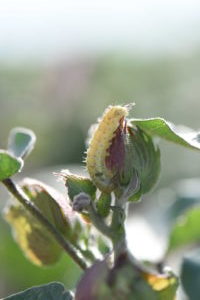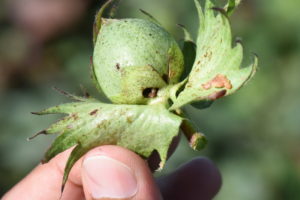Cotton variety selection time is here
Writer: Steve Byrns, 325-653-4576, [email protected]
Contact: Dr. Suhas Vyavhare, 806-746-6101, [email protected]
LUBBOCK – When it comes to making a cotton crop, selecting the right planting variety is the most important decision a cotton farmer will make all year, said a Texas A&M AgriLife Extension Service cotton entomologist.
“Let’s face it, technology seeds are expensive, but knowing what protections your particular crop might need will go a long way toward getting the most return for your invested seed dollars,” said Dr. Suhas Vyavhare of Lubbock.

“Selecting Bt versus non-Bt or the kind of insect protection trait package you need is an important consideration in selecting cotton varieties.”
“Over the years, Bt technologies have been fairly effective in controlling worms in cotton,” Vyavhare said. The second generation Bt was more effective than the first one, and the third generation technology is more effective than the second generation due to the addition of toxins. But as might be expected, newer protective traits usually come with additional costs. So if a producer doesn’t need these added protective traits, Bt varieties with older trait packages are still competitive in terms of yield and quality.”
Bt technology has transformed from a single-gene trait to multi-gene trait packages since the technology was first introduced into U.S. agriculture in 1996, Vyavhare said. While the first generation Bt cotton had only a single Bt gene, the second generation Bt technologies such as Bollgard 2, TwinLink and WideStrike produce two Bt toxins.
Now, he said, the most recent third generation Bt varieties have a three-gene trait.
“Phytogen brand varieties with WideStrike 3 have already been on the market for the last couple of seasons,” he said. “Recently, Monsanto (Deltapine brand) and Bayer CropScience (FiberMax and Stoneville brands), announced the availability of some of their varieties with Bollgard 3 and TwinLink Plus technologies, respectively.”

Vyavhare said some farmers opt to go with non-Bt cotton to avoid paying the expensive technology fees, which drive the cost of the seed up. Since the protections from insect pests are not present, he said field scouting for pest problems becomes paramount to stay on top of the game.
“In 2016, worm pressure on the Texas High Plains was so low that many of our non-Bt cotton fields got away without spraying for worms,” he said. “This doesn’t mean we will have a similar situation in 2017, as we could well face higher worm pressure, so there is a higher risk associated with the non-Bt crop compared to cotton protected by Bt. However, with a good scouting program in place coupled with timely insecticide applications, non-Bt cotton can perform well.
“While insect protection traits are an important consideration when selecting varieties, they should not take priority over agronomic characteristics such as yield, maturity and fiber quality. I have seen some of the non-Bt cotton varieties performing as well as the Bt cotton and sometimes even better, especially on the Texas High Plains where worm pressure is usually light. So it’s not the transgenic insect trait that should come first, but rather it’s the inherent yield potential of a variety that should govern the final decision of what cotton variety to plant.
“But if Bt varieties are in your future this coming season, know what particular traits in terms of protection you’ll most likely need on your farm and which varietal generation best offers those protections,” Vyavhare said. That way you’ll not be paying for traits you may not need, because in today’s tight cotton market, every dollar saved is a dollar earned.”


